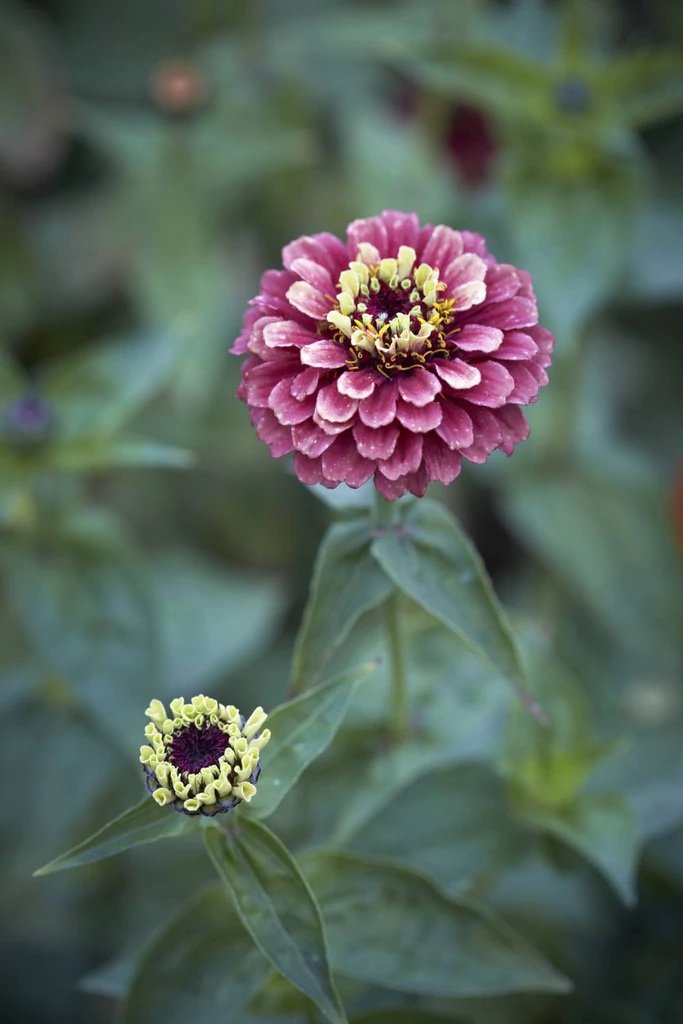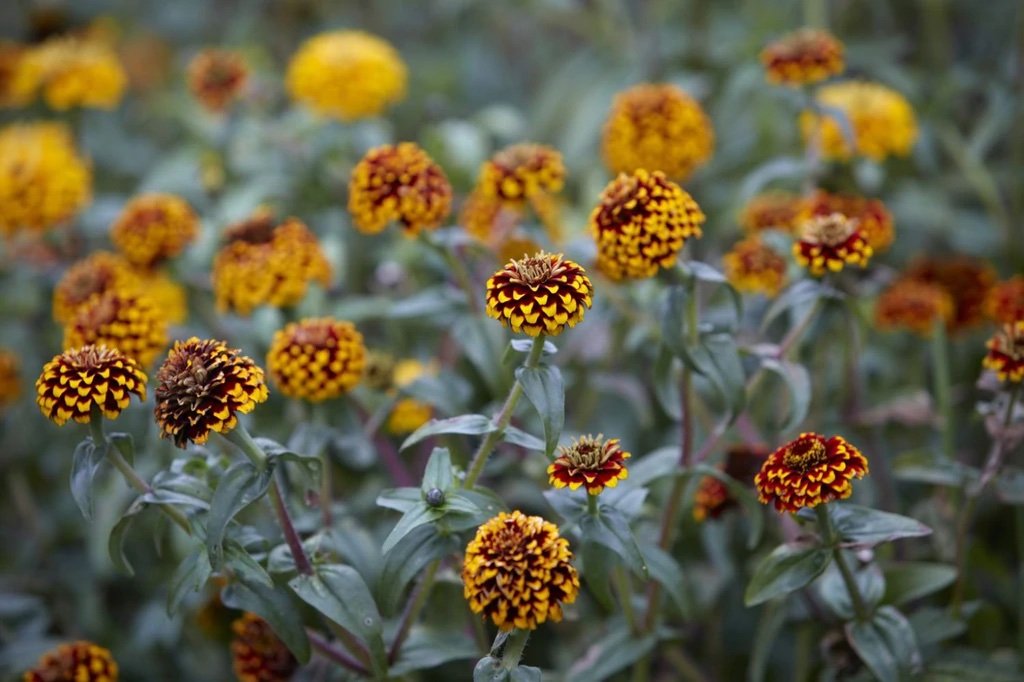Gardenista | Zinnias
BY KENDRA WILSON
Polly Nicholson, a Wiltshire-based florist and grower with a taste for adventure, shares with us the results of her zinnia trials this autumn. “I wouldn’t grow zinnias instead of dahlias,” she says, “but as an alternative crop to supplement and complement, they are proving invaluable.”
Zinnia elegans ‘Benary’s Giant Salmon Rose’, more than 3 feet tall, works in a large vase with other giant zinnias.
The detail and color of selected zinnias is easy to appreciate when they are displayed in glass bottles as specimens. Less successful are the zinnia seed mixes; although they have a similar shape and size in common, some of the colors can be too zingy.
For more glimpses inside the flower room at Bayntun Flowers, see Outbuilding of the Week: A Stable for Horses and Flowers in Wiltshire.
Z. elegans ‘Queen Red Lime’.
Zinnia haageana ‘Aztec Red’, with other dwarf varieties at Bayntun Flowers.
Newly available Zinnia elegans ‘Zinderella Peach’, which can be simple like this, or with a prominently crested shape, like a scabious.
“The giant Zinnia elegans ‘Benary’s Giant Lime’ and ‘Benary’s Giant Salmon Rose’ have been a real hit,” says Polly, “although some of the single shades we have grown here have erred on the brash.”
“All of the Zinnia elegans have worked beautifully as cut flowers,” says Polly. “They combine with earthy autumn hues, of cotoneaster, hawthorn berries and foliage, oak leaves on the turn, astrantias, dahlias.”
Polly has found that her Zinnia elegans combine particularly well with dahlias of a burgundy hue, such as D. ‘Karma Choc’ and the peachy oranges, such as ‘Labyrinth’ (surely this year’s ‘Cafe au Lait’?) as well as early chrysanthemums.
“The Zinnia elegans also work well in herbaceous borders,” says Polly. “They are perfect for filling gaps; they can be picked, and then ripped out at the first frosts.” A combination of Z. elegans ‘Queen Lime’ with ‘Queen Red Lime’ (shown here) is effective planted in a kind of tapestry effect at the front of a border, as recently spotted by Polly at the Oxford Botanic Garden.
Z. elegans ‘Oklahoma Golden Yellow’. Described by plant breeders Benary as a good florist’s flower, being tall, floriferous, and blight-resistant.
‘Zinderella Peach’, a giant zinnia that can grow to 3 feet tall, and requires staking.
Beyond expectation have been Polly’s Aztec varieties, whether ‘Aztec Burgundy Bicolor’, ‘Sunset’ ‘Orange’, or ‘Red Bicolor’, shown here. “They have thrilled me with their richness of color, waviness of stem, and abundance of flower,” she says. They are more “mini” than “dwarf,” with an excellent resistance to mildew, or seedling blight.
Part of the notoriety around zinnias is that unless handled very carefully early on, they roll over and die. It is important that soil is fertile but well-draining and that they are sown into modules (or directly into the ground), so that their roots are not disturbed. To minimize the risk of blight, they should be well-watered at the beginning, but around the base of the plants. “Plenty of sun is desirable,” says Polly. “But [for UK readers] don’t let that put you off. Ours did really well after a slow start.”
Zinnia marylandica ‘Salsiando’, the tiniest variety on trial, at 3 inches tall.
A new variety of Mexican zinnia, Z. haageana ‘Aztec Red Bicolor’ is only about 6 inches tall.








